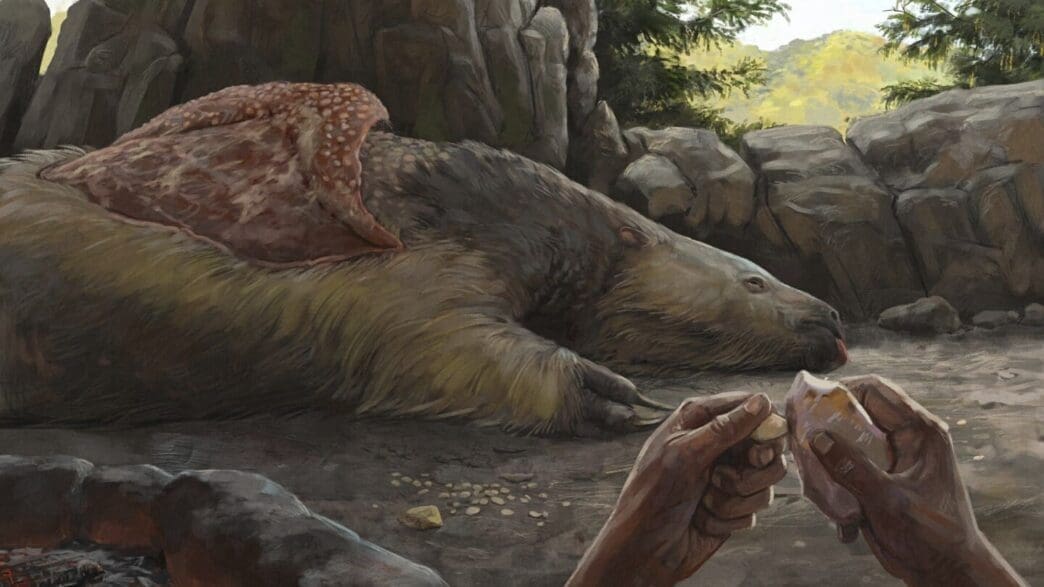It turns out that giant sloths and mastodons weren’t just legendary creatures of Earth’s past, but roommates with early humans in the Americas. Recent archaeological discoveries reveal that these massive animals and humans coexisted for thousands of years, much earlier than previously believed, challenging long-held assumptions about the New World’s first inhabitants and their interactions with megafauna.
Once upon a time, giant sloths were not the sluggish creatures we think of today. Weighing up to four tons, they roamed the prehistoric savannas and wetlands of the Americas, sharing their habitat with early humans. Initial theories suggested humans quickly drove these massive animals, along with mastodons and saber-toothed cats, to extinction upon their arrival. However, new research shifts this narrative.
Archaeological sites in North and South America, such as Arroyo del Vizcaíno in Uruguay and Santa Elina in Brazil, provide compelling evidence that humans may have walked alongside these creatures much earlier. At Santa Elina, scientists have discovered sloth bones seemingly modified by human hands, dating back as far as 27,000 years. These bones, with polished surfaces and small holes, suggest they were crafted into ornaments by ancient artisans.
Mírian Pacheco, a researcher at the University of Sao Paulo, and her team have studied these artifacts, pointing out distinct signs of human manipulation. Her research suggests these were not ancient fossils repurposed, but rather fresh bones modified shortly after the animals’ demise. These findings help paint a richer picture of ancient human life, indicating a prolonged coexistence with giant beasts rather than immediate overkill.
Meanwhile, other sites like Monte Verde in Chile, where 14,500-year-old human tools were unearthed, and White Sands in New Mexico, featuring human footprints dated 21,000 to 23,000 years ago, further support the idea of an extended human presence pre-dating the Clovis era. Such evidence suggests that early people did not swiftly wipe out megafauna, but instead cohabited the landscape with them, at least for a time.
Some in the scientific community remain skeptical, critiquing the lack of stone tools and artifacts accompanying footprints as at White Sands. Yet, paleontologist Richard Fariña and others find the growing body of evidence compelling enough to rethink traditional timelines. This ongoing research challenges the straightforward story of human arrival and mass extinction, showing a complex interaction over millennia.
Researchers like Thaís Pansani, studying burned sloth bones from Brazil that appear to have been charred by human-made fires, suggest early humans thrived in these environments, utilizing available resources in ways not entirely understood today. This could mean cooking practices or ceremonial fires, the purpose still debated among experts.
These revelations open up endless possibilities for reinterpreting the past, nudging scientists to consider a longer, interconnected history of humans and megafauna. As more evidence surfaces, the picture of our ancestors’ lives grows more detailed, showing not just survival, but adaptation alongside Earth’s former titans.
While the exact moment humans stepped foot into the Americas remains uncertain, it’s increasingly evident they shared the prehistoric stage with colossal creatures far longer than once assumed. This hints at a greater adaptability and coexistence, reshaping our understanding of ancient human life and their giant companions. The dance of these giants with early human settlers continues to unveil the secrets of a world long buried beneath our feet.
Source: Apnews








